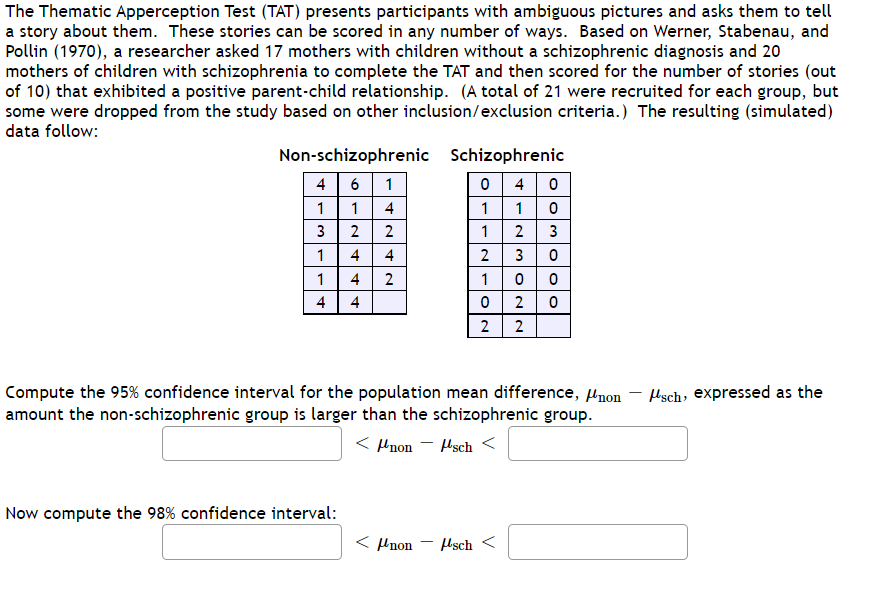Home /
Expert Answers /
Statistics and Probability /
the-thematic-apperception-test-tat-presents-participants-with-ambiguous-pictures-and-asks-them-t-pa261
(Solved): The Thematic Apperception Test (TAT) presents participants with ambiguous pictures and asks them t ...
The Thematic Apperception Test (TAT) presents participants with ambiguous pictures and asks them to tell a story about them. These stories can be scored in any number of ways. Based on Werner, Stabenau, and Pollin (1970), a researcher asked 17 mothers with children without a schizophrenic diagnosis and 20 mothers of children with schizophrenia to complete the TAT and then scored for the number of stories (out of 10) that exhibited a positive parent-child relationship. (A total of 21 were recruited for each group, but some were dropped from the study based on other inclusion/exclusion criteria.) The resulting (simulated) data follow: Non-schizophrenic Schizophrenic Compute the \( 95 \% \) confidence interval for the population mean difference, \( \mu_{\text {non }}-\mu_{\mathrm{sch}} \), expressed as the amount the non-schizophrenic group is larger than the schizophrenic group. \[ <\mu_{\mathrm{non}}-\mu_{\mathrm{sch}}< \] Now compute the \( 98 \% \) confidence interval: \[ <\mu_{\mathrm{non}}-\mu_{\mathrm{sch}}< \]
Expert Answer
For Non-schizophrenic : ?x = 48 ?x² = 174 n1 = 17 Mean, x?1 = ?x/n = 48/17 = 2.8235 Standard deviation, s1 = ?[(?x² - (?x)²/n)/(n-1)] = ?[(174-(48)²/1
